CSMT Building
The Chhatrapati Shivaji Maharaj Terminus (CSMT) is among the busiest railway stations across the country that caters to around 45 lakh suburban commuters and close to 6-7 lakh long-distance train passengers, every day. This is also among the top tourist attractions that are widely photographed. Since 1888, Victoria Terminus (presently CSMT) has ingrained itself in the DNA of Mumbai and India.
British architect F.W. Stevens built this edifice which became the symbol of Bombay as the ‘Gothic City’. The terminal was built over 10 years, starting in 1878, whose design was based on late medieval Italian models. Its remarkable stone dome, turrets, pointed arches and eccentric ground plan are close to traditional Indian palace architecture.
The staircase at the terminus leads to the first and second floors which are a blend of Victorian Gothic Revival and Indian architecture. The dome above has small rectangular tiles in a combination of green, grey, and sand colours. They also restored stained glass works and a sky-lit concourse. Sculptors from Rajasthan were called in to repair the dilapidated gargoyles, with the restoration of certain granite and marble work on the agenda. The dome and walls from the inside of CSMT building was cleaned and dusted for which drones were used.
It has also been named as UNESCO World Heritage Site. And there was also a proposal for turning this heritage site into a museum as well, which saw resistance from trade unions. For conservation of CSMT, the CR received Rs 60 lakh in this budget. They also received Rs 10 lakh which is for the first time, for the conversion of the existing heritage building into a world-class museum at a cost of Rs 25 crore.
The grand, Gothic structure has been used as an office for over a century. The UNESCO World Heritage Site also houses a small heritage gallery which was open to all during pre-Covid times. This space includes several relics and preserves from India’s first railway company. Some prominent ones are the Allen & Turner lamps from the Masjid Bunder station-bridge; GIPR plaques from old DC electric masts; Mangalorean tiles and Tucker & Reeves bolt safes, black colored model of locomotive, badges that represented different railway zones during the British era.
CSMT has been proposed to be transformed into a ‘Railopolis’ that includes conservation of heritage buildings, revamp of the areas in and around CSMT station, the convergence of different modes of transportation, and designing facilities for passengers. In fact, lease-rights for real estate up to 99 years are also proposed. The plan also encompasses creating a multimodal hub for modes of transportation, a heritage zone, and give shape to station development through private financing. The concourse area too will be beautified and a green zone created.
Banganga
Right in the heart of south Mumbai is a freshwater pond that is iconic to the history of this city. We are talking about Banganga in Walkeshwar, which is not only a tourist attraction but also holds spiritual values owing to the mythology behind it. At present, this freshwater tank which dates back to the 12th Century is undergoing beautification.
The civic body has been demolishing illegal structures and hutments that have cropped up in the surrounding areas of this tank. They will construct a road and restore a heritage look. In fact locals there claim that Banganga tank is currently closed for public viewing not only due to Covid-19 pandemic but also to ensure the continuation of this beautification project.
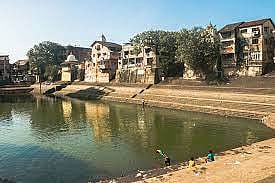
As part of beautifying this Grade-1 Heritage structure, putting up CCTVs, cleaning the premises, keeping miscreants away and other arrangements; an entry fee of Rs 20 will be charged. People come to the tank to wash their clothes, people litter as well while miscreants simply loiter around.
Banganga is a rectangular tank surrounded by steps on all four sides, its banks dotted with small temples and illegally built huts that are being demolished by BMC. During festivals, people come here to offer their prayers, burn incense sticks, chant prayers, and flowers. Young kids even swim in this pond.
A little piece of history and the culture behind this centuries’ old tank, which is surrounded by a string of high-rises in the Malabar Hill area is said that when Lord Rama was thirsty and tired, he asked his brother Lakshmana for a drink of water who shot an arrow into the ground that resulted in a spurt of freshwater. It was believed that this water came from a tributary of Ganga River and the spot was hence named Banganga.
Gateway of India
One part of Mumbai’s land in Colaba ends where it meets the Arabian Sea. Between the land and sea stands a tall, massive gate which is more like a monument called Gateway of India. This colossal edifice is one of the unique landmarks of the country that was constructed in 1924 along Mumbai’s harbour.
The Gateway of India is a monument that marks India's chief ports and is a major tourist attraction. At one point in time, this monument represented the grandeur of the British Raj in India. The total construction cost of this monument was approximately Rs 21 lakh. The main objective behind the construction of the Gateway of India was to commemorate the visit of King George V and Queen Mary to Bombay (Mumbai).
In March 1911, Sir George Sydenham Clarke, who was then the Governor of Bombay, laid down the monument's first foundation. This plan was approved in 1914, and reclamations at Apollo Bunder were completed in 1919. The architectural design of Gateway of India was conceived by George Wittet.
The structural design of the Gateway of India is constituted of a large arch, with a height of 26 meters. It is built in yellow basalt and indissoluble concrete and is designed in the Indo-Saracenic style. The central dome of the monument is about 48 feet in diameter, with a total height of 83 feet. The passing of the 'First Battalion of the Somerset Light Infantry' was recorded as the first main event that took place at the Gateway of India. This ceremony was conducted on February 28, 1948 when the last set of British troops and divisions left India.
During pre-Covid times, Gateway of India remained to be favourite spot for tourists, hawkers and vendors, and photographers too. There are boats and steamers parked close to the Gateway of India and a staircase next to it leads to the Arabian Sea.
Khotachiwadi
Khotachiwadi, which translates to 'garden of the Khot', is a small hamlet located in Girgaum in south Mumbai, which is largely known for its Portuguese-style, colorful houses. Khotachiwadi, which can be reached after alighting at Charni Road railway station, has a distinctive character and it reflects the history right from the moment go. The village, which was declared a protected historical precinct in 1995, but the order was reversed in 2006, which was highly opposed by the residents and activists.
Located at the heart of Khotachiwadi, is the chowk, with a couple of benches, which serves as an ideal location for people to sit and chat. The spot also hosts vendors throughout the day as well as the evening carrom sessions which take place right opposite the back wall of Hotel Girgaon Palace.
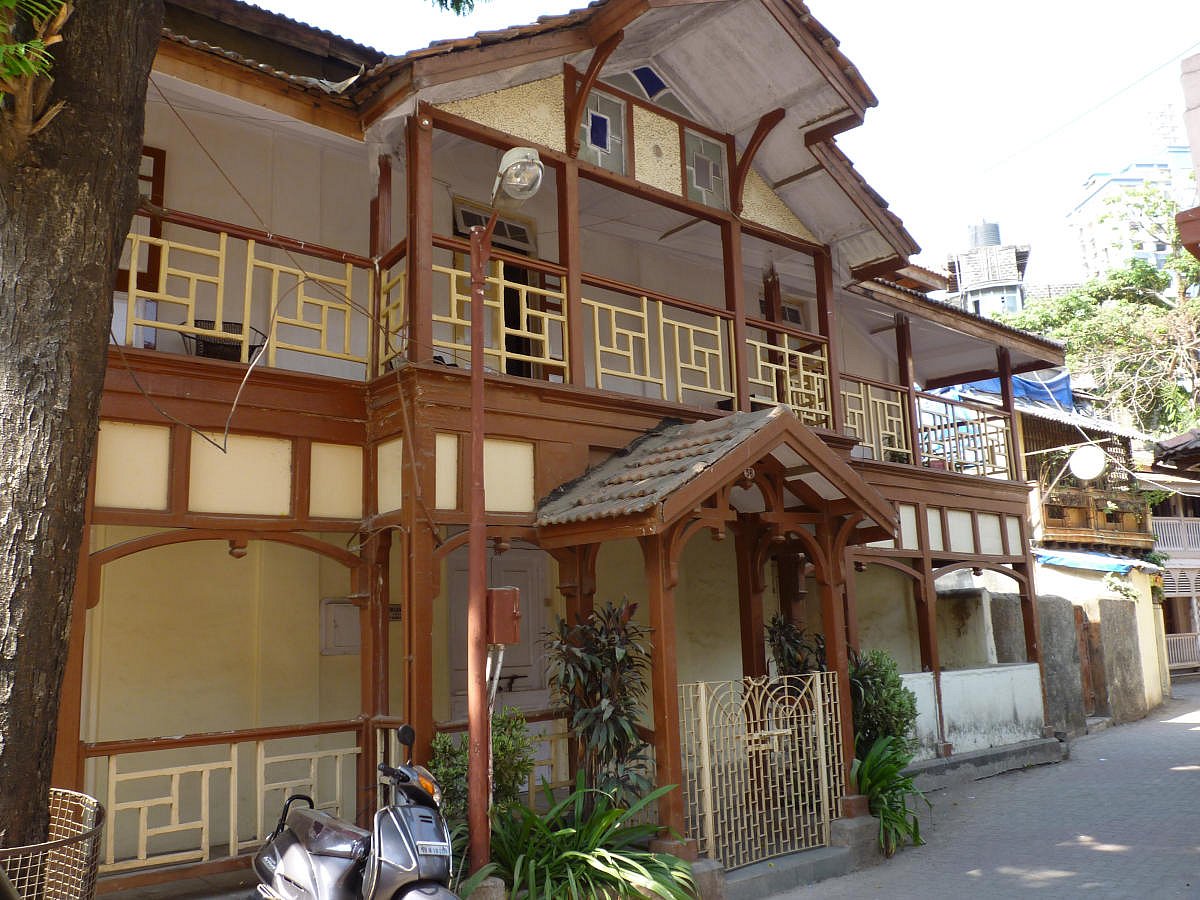
The village, Khotachiwadi, was founded in the 18th century when a local called Khota, a Pathare Prabhu (Hindu Brahmin), who sold off his plots to the East Indian Christians. Khotachi Wadi has thus become an avowal of religious harmony. There were around 65 houses then, but the number has since come down by more than a half to 28. The Christmas celebration and vibes can be felt and best enjoyed in the narrow winding lanes of the Portuguese Era at Khotachiwadi.
Many of these houses have verandas, intricate column designs, and arched doorways. If one visits the Khotachiwadi in the afternoon, they will be greeted by the smell of the Konkani and Goan cuisine, particularly of fish being cooked in the kitchens. Khotachiwadi, today faces a threat from the rapid urbanization, with a move to convert the houses to high-rise buildings. The struggle is to preserve the few remaining heritage buildings and their replacements by glass-faced buildings.
Crawford Market
Mahatma Jyotiba Phule Mandai, popularly known as Crawford Market, situated in south Mumbai, is one of the most shopping famous markets in Mumbai today. Earlier, it was the main wholesale market for fruits in Mumbai until March 1996, when the wholesale traders were relocated to Navi Mumbai.
Located at the north end of CSMT (Chhatrapati Shivaji Maharaj Terminus) railway station is popular for wholesale shopping items like bags, home decor items, stationery, clothing, fruits, vegetables, and poultry products, among others. It is also known for housing some of the most well-known pet shops in Mumbai. Crawford Market is most famous for variety shipping at one place and that too at an unbelievably affordable price.
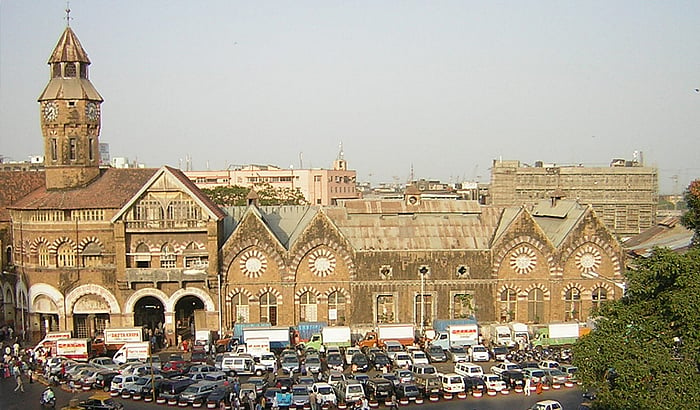
Named after Arthur Crawford - the first Municipal Commissioner of Mumbai, Crawford Market sports Flemish and Norman architectural styles depict the fascinating old charm of the city. One can find good deals at wholesale rates for products ranging from household from fashion to accessories to flowers and everything. One can also find that lanes in this market are segregated with each of them dedicated to different varieties of items such as party items, home decor, stationery, perfume, fruits and vegetables, and spices.
Built in 1871, spread over a vast area of 72,000 sq. yards, Crawford Market is extremely famous for its architecture, as the place is designed in such a manner so that it receives ample sunlight during the day. One of the main features of this market is the Clock Tower, adorned with intricate Victorian carvings. Crawford Market was the first market in India to receive electricity in 1882.
Crawford Market also is a perfect place to buy imported goods which are very difficult to find in other markets, right from fresh bakery products, pet food, imported cheese to meat and poultry at a throwaway price. The Crawford Market also receives a lot of accolades and crowds for the small food stalls scattered throughout the streets, selling a large variety of food items like different kinds of juice and shakes and delicious quick bites.
Rajabai Tower
Rajabai Tower, a famous 85-metre-high clock tower located in South Mumbai, stands tall in Mumbai University's Fort Campus located next to the High Court. The tower, built by Sir Gilbert Scott, who modeled it on the Big Ben, a clock tower in London, has become one of the major tourist destinations in Mumbai. The tower derives its name from the mother of its founder, Premchand Roychand and was added to the list of World Heritage Sites in 2018.
Rajabai Clock Tower holds a big clock that also plays melodic tunes at fixed intervals and can be viewed from a distance. The tower has been beautifully embellished with oriental figures and the stained glass windows are among its best features and are often considered the best in the city. It was the tallest edifice when it was built.
The tower made up of locally sourced Kurla stones and the material for the top was brought from Porbandar, Rajabai Tower, seamlessly braids Victorian, Gothic and Islamic architecture. It still remains one of the abiding features in a fast-changing skyline. Galleries at various levels offer a 360-degree view of the city and exquisitely carved statues represent the various communities of the Bombay state.
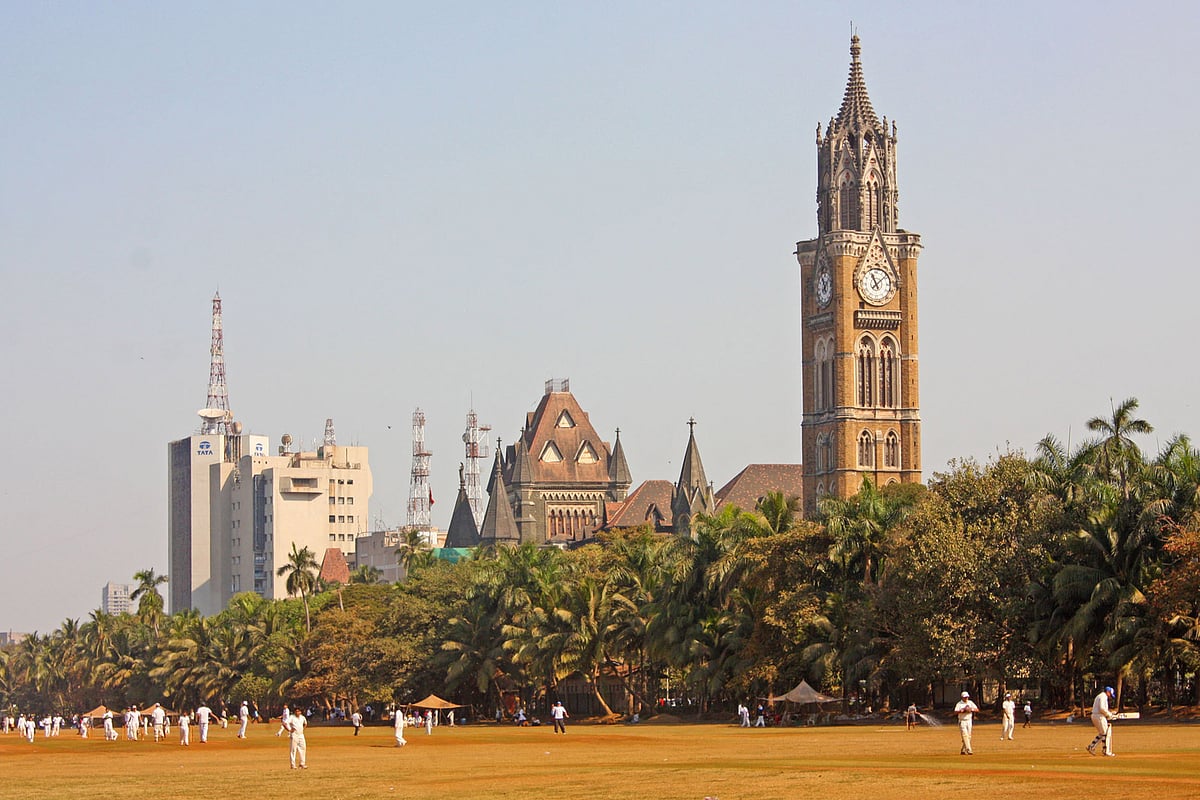
Rajabai Tower was built by its founder Roychand, who wanted to ensure his blind mother would be able to have her food on time. And that’s why he got the clock tower built, with a bell to keep track of the time. The tower underwent restoration work from October 2013 to 11 May 2015, and was reopened in March 2015 after renovation.
The restoration efforts were recognised by UNESCO in 2018 when the Library and the Rajabai Clock Tower received the UNESCO Asia-Pacific Award for Cultural Heritage Conservation. The tower was closed to the public after it became a frequent spot for those attempting to commit suicide.
Asiatic Society of Mumbai Town Hall
Mumbai has its share of heritage and colonial buildings and the Asiatic Society Town Hall is one among them. Given its history and association with the British era, it becomes an important location in Mumbai. It was opened as a cultural centre for the British officials residing in Bombay. The Town Hall saw all official announcements and live performances being conducted here since its completion in 1833.
The Literary Society of Bombay was founded in 1804 by Sir James Mackintosh, one of the most distinguished lawyers and a public figure in England, with the intention of ‘promoting useful knowledge. The inspiration behind the formation of the Literary Society of Bombay was taken from Sir William Jones who had established the Asiatic Society of Bengal Presidency around two decades earlier.
The conception of the idea of building a Town Hall was first done by the ‘Literary Society of Bombay’ to conserve literature, artefacts, cultural and oriental art. Hence, the construction was completed in the year 1833 after the society received funds.
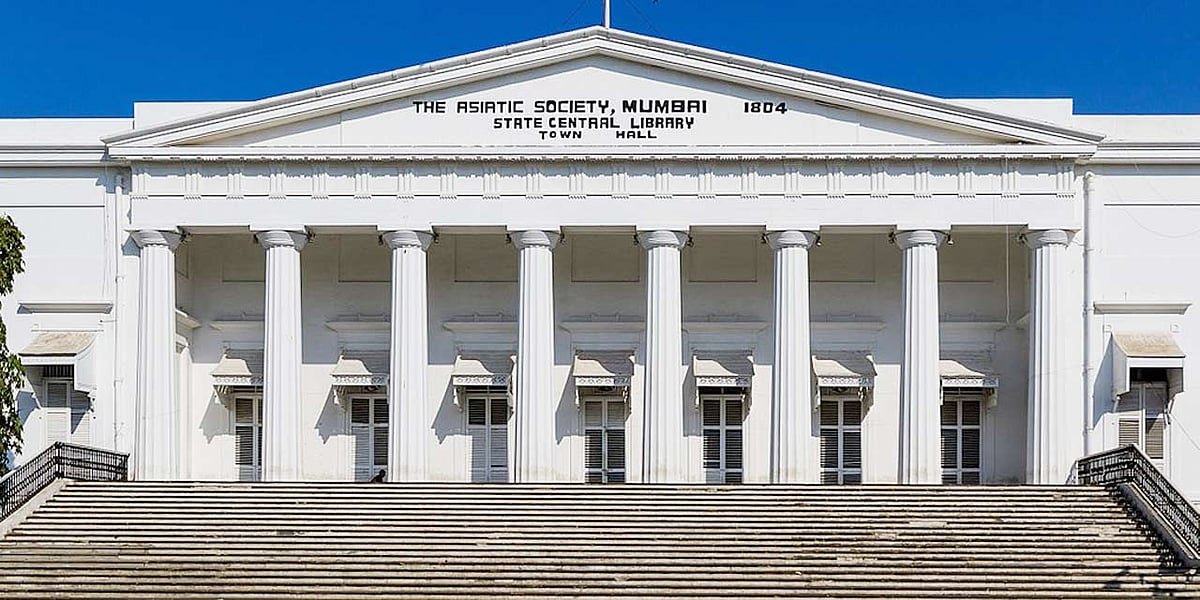
It was designed by one of the finest engineers of Bombay during the time, Colonel Thomas Cowper. The architecture of the neoclassical Town Hall is a mix of elements from both Greek and Roman architectural styles spanning across 200 feet with a height of 100 feet.
While the entrance of the building is led by a flight of 30 steps, the Doric style columns, which are 8 in number, are lined just at the entrance followed by a Grecian portico. The entire structure is constructed out of stones that were shipped from England while the ancient Burma teak-wood that covers the floors.
Moreover, it is famous for its antique collection of 8 lakh books, journals, manuscripts, etc. The exceptional collection of the library includes the 16th century Sanskrit manuscript of Mahabharata, the original 14th century manuscript of Dante’s poem, ‘The Divine Comedy’, over 3000 manuscripts of books in Sanskrit, Prakrit, Persian and Urdu. Other treasures of the library include periodicals, maps, prints and painted folios.
BMC Headquarters
The Municipal Corporation of Greater Mumbai (MCGM) Building, Mumbai, located in South Mumbai, Maharashtra, India is a Grade IIA heritage building opposite the Chhatrapati Shivaji Terminus (a UNESCO World Heritage site) at the junction of Dadabhai Naoroji Road and Mahapalika Marg. It is also known as the BrihanMumbai Municipal Corporation (BMC) Building. The ‘V’ shaped building houses the civic body that governs the city of Mumbai and it is the largest civic organisation in India as well as in Asia covering an area of 167.6 square metres.
The MCGM was created in 1865 and Arthur Crawford was its first Municipal Commissioner. The Municipality was initially housed in a modest building at the terminus of Girgaum Road. In 1870, it was shifted to a building on the Esplanade, located between Watson Hotel and the Sassoon Mechanics Institute where the present Army & Navy building is situated. On 9 December 1884, the foundation stone for the new building of the Bombay Municipal Corporation was laid opposite to Victoria Terminus (now Chhatrapati Shivaji Maharaj Terminus), by the Viceroy of the time, Lord Ripon.
Two designs were considered for the building; one of the Gothic designs done by Frederick William Stevens and the other in the Indo-Saracenic design presented by Robert Fellowes Chisholm. In the end, a blend of Venetian Gothic and Indo-Saracenic was settled upon. The building was completed in 1893.
The Mumbai Heritage Conservation Committee of the Municipal Corporation of Mumbai has categorized the heritage buildings of Mumbai under the guidelines prepared for the purpose. According to these guidelines, the Municipal Corporation Building, Bombay has been categorized by the Mumbai Municipal Corporation as Grade II A. The list of heritage buildings, as categorized on 24 April 2005, under Grade I, Grade II, Grade IIA, Grade III and Precincts are 591.
The building is known for its 255 feet (77.7 m) tall tower. The chief architectural feature is the central dome that rises to a height of 71.5 m (234.6 ft). The gable has a huge winged allegorical figure representing the 'urbs prima in Indis', the first city of India as it was to be known then. At the entrance to the MCGM stands a bronze statue of Sir Pherozeshah Mehta, a prominent Indian lawyer.
Taj Mahal Palace Hotel
The Taj Mahal Palace Hotel is a heritage, five-star, luxury hotel built in the Saracenic Revival style in the Colaba area of Mumbai, Maharashtra, India, situated next to the Gateway of India.
Historically it was known as the "Taj Mahal Hotel" or simply "The Taj". The hotel is named after the Taj Mahal, which is located in the city of Agra approximately 1,050 kilometres (650 mi) from Mumbai. It has been considered one of the finest hotels in the East since the time of the British Raj.
Jamsetji Nusserwanji Tata, the founder of the Tata Group, opened the Taj Mahal Palace, a hotel in Mumbai (formerly called Bombay) overlooking the Arabian Sea, on 16 December 1903. It was the first Taj property and the first Taj hotel. There are several anecdotal stories about why Tata opened the Taj hotel.
The original Indian architects were Sitaram Khanderao Vaidya and D. N. Mirza, and the project was completed by an English engineer, W. A. Chambers. The builder was Khansaheb Sorabji Ruttonji Contractor who also designed and built its famous central floating staircase. The cost of construction was £250,000 (£127 million in 2008 prices)
The hotel is made up of two different buildings: The Taj Mahal Palace and the Tower, which are historically and architecturally distinct from each other (the Taj Mahal Palace was built at the start of the twentieth century; the Tower was opened in 1973). The hotel has a long and distinguished history, having received many notable guests, from presidents to captains of industry and stars of show business.
When it opened in 1903, the hotel was the first in India to have: electricity, American fans, German elevators, Turkish baths and English butlers. Later it also had the city's first licensed bar, India's first all-day restaurant, and India's first discotheque, Blow-Up. Initially, in 1903, it charged Rs 13 for rooms with fans and attached bathrooms, and Rs 20 with full board. During World War I the hotel was converted into a military hospital with 600 beds.
The hotel was one of the main sites targeted in the 2008 Mumbai attacks.








